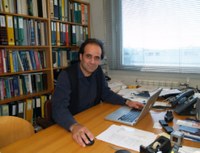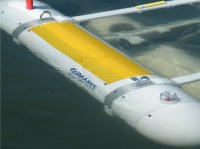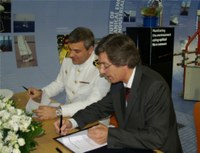INESC TEC technology takes to the high seas
At the beginning of February project ICARUS kicked off (Integrated Components for Assisted Rescue and Unmanned Search operations) with 24 European partners. The project is financed under the seventh Framework Programme in the area of security and aims to develop robotic tools to support rescue teams on search and rescue missions. The project will last four years and addresses two areas of security: land security and maritime security. Due to its experience in aquatic robotics, with examples such as MARES and TriMARES (the winner of the Exame Informática’s Innovation Award) and the vessels ROAZ and Fast, INESC TEC will lead the maritime component of the project. 
The project has a budget of 17 million Euros and INESC TEC will be contributing with expertise from two Units – The Robotics Unit and the Information and Computer Graphics Systems Unit (USIG). The Robotics Unit will be responsible for creating the robotic technology and USIG will help develop the supervision and control system and in the training and support system. The supervision and control system will use geospatial data in a spatial database that is gathered by sensors on the robotic vehicles. A high quality interface will also be created to supervise vehicles and search and rescue teams and provide information that is relevant to the scenario and people involved. The training and support system will include serious games so that supervisors and operators can train to use the system. This system will also help mission supervisors make decisions in critical situations.
When asked where the idea came from for this project, Aníbal Matos, a researcher at the Robotics Unit and the project coordinator at INESC TEC, states that the Robotics Unit had already identified the search and rescue area as a relevant area of application and they were taking steps to develop technology in this area. He states, “we decided to join a European consortium that was being formed in this area and the Land element already had many partners but they were looking for partners for the Maritime element. We saw this as an important opportunity”.
 Safer missions for rescue teams
Safer missions for rescue teams
So what makes ICARUS different and pioneering? “The aim is to develop robots that can be used in crises, for example natural disasters to help search and rescue teams”, explains Aníbal Matos. He elaborates: “With the recent accident with the cruise liner in the Mediterranean, devices that could conduct search and rescue missions at night, when search and rescue teams cannot, could have helped save more lives”. These devices could be used in adverse weather conditions at sea or in low visibility.
This type of equipment will make search and rescue missions safer for rescue teams and “one of the most important elements of the project is understanding how robotic tools can join these missions”, he states. However, according to Aníbal Matos, these devices will not replace search and rescue missions, they will support them. The aim is for these robots to be given a high level of autonomy that enables them to find survivors in catastrophes thus freeing search and rescue teams from the more difficult and dangerous tasks.
These robots will have onboard sensors to detect humans and they will be able to communicate with other systems. They will be highly autonomous in order to be able to operate in catastrophes and accidents. The equipment being developed will include a robotic life raft. “We are currently defining the requirements and we believe that in a year’s time we will have result to show”, states the researcher. This life raft will be accompanied by aerial equipment.
 An outstanding consortium
An outstanding consortium
The ICARUS consortium is coordinated by the Belgium Military Academy and INESC TEC is working directly with the Portuguese Navy, one of the project partners, and two organisations in Italy: CALZONI, a company that develops robotic tools and a NATO research centre (NATO Underwater Research Centre – NURC). INESC TEC is responsible for the maritime element of the project that will be conducted in Portugal.
The added value of this Consortium is clear. It is a large consortium that means INESC TEC can “work with partners from different backgrounds, which is very positive as we can exchange experience with other researchers”, he states. At the same time, “we will be able to show our potential and that could lead to other projects in the future”. Aníbal Matos is confident about the applications of the technology being developed, “some of the partners are institutes and they believe that this project will have important results and they therefore want to participate to turn these results into value”, he concludes.
In May project ICARUS will be the focus of an INESC TEC workshop that will take place during the Fórum do Mar (at the Exponor from 10th to 12th May) where INESC TEC will also be represented. This event will take place one year after the signing of the protocol between the Portuguese Navy and INESC TEC to work together and become leaders in the Maritime Economy.




